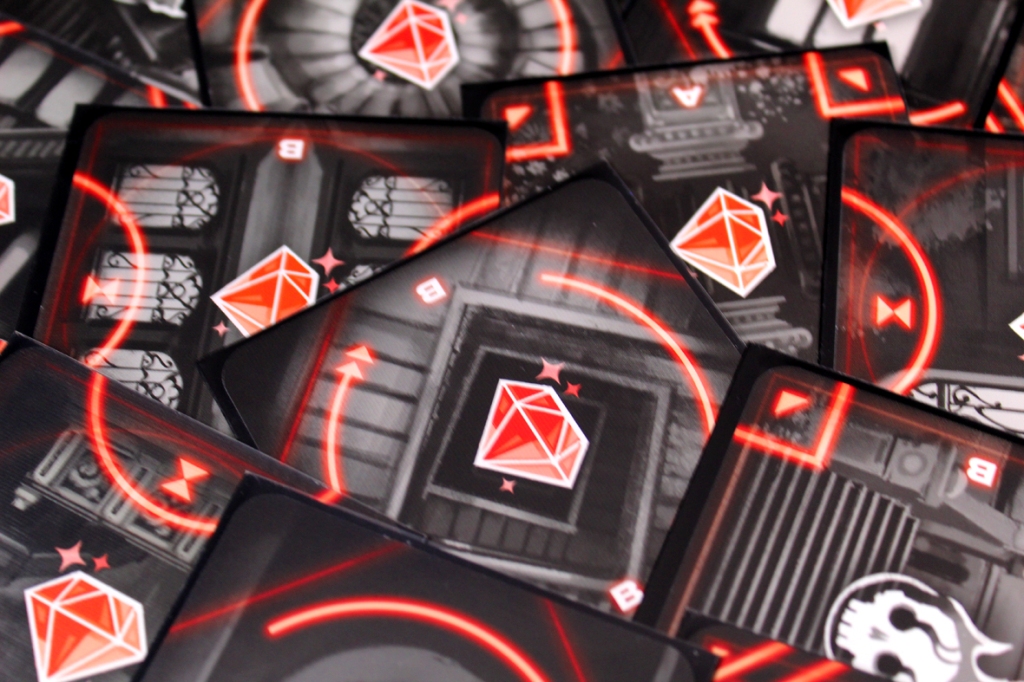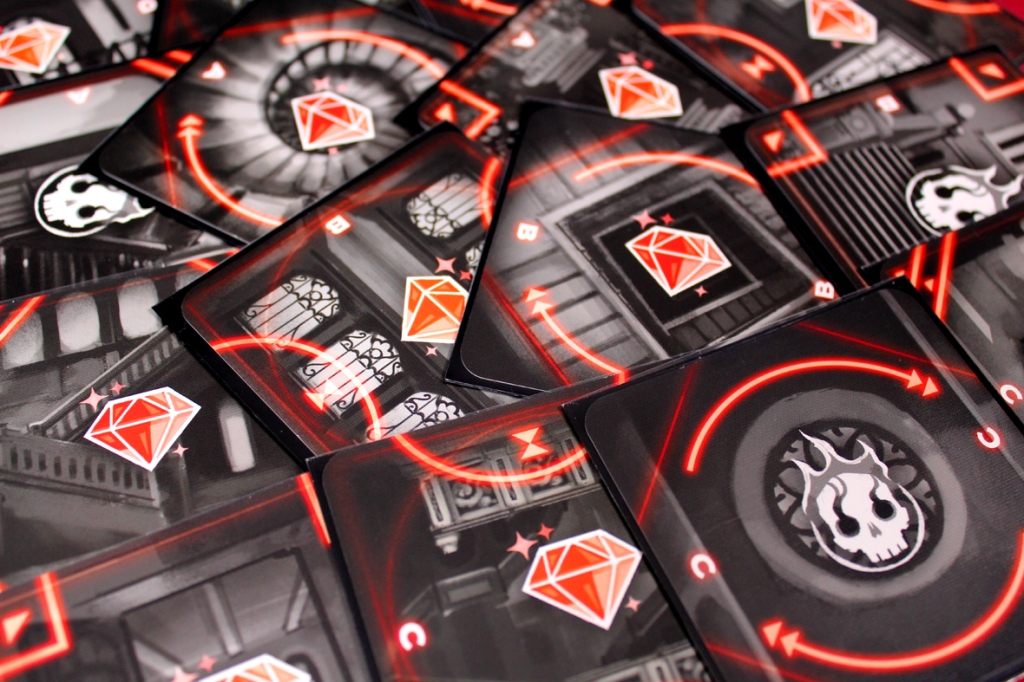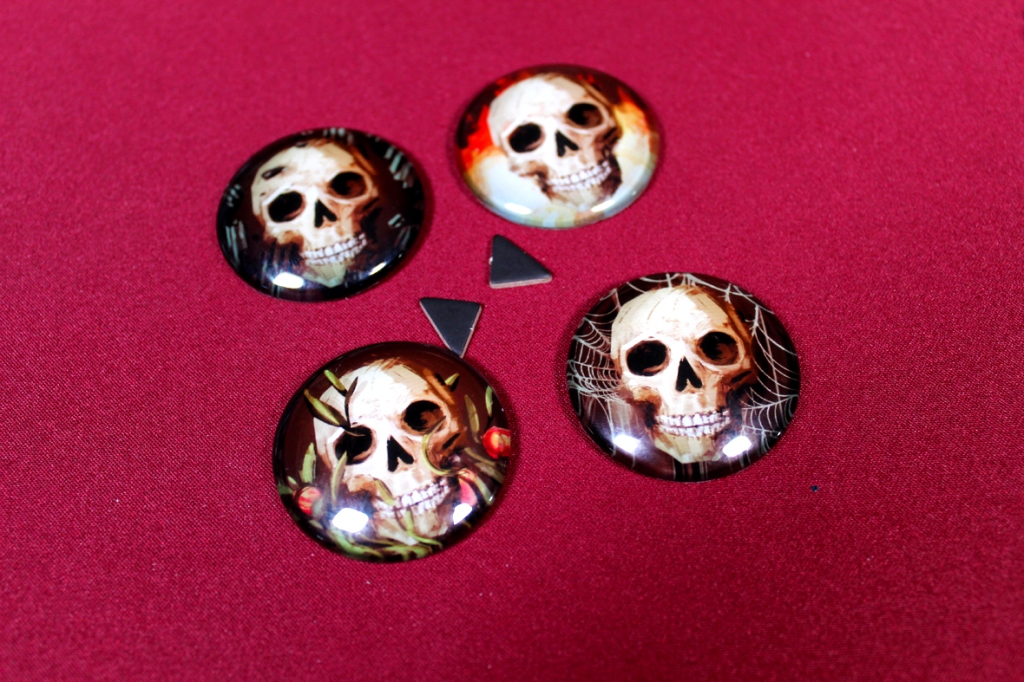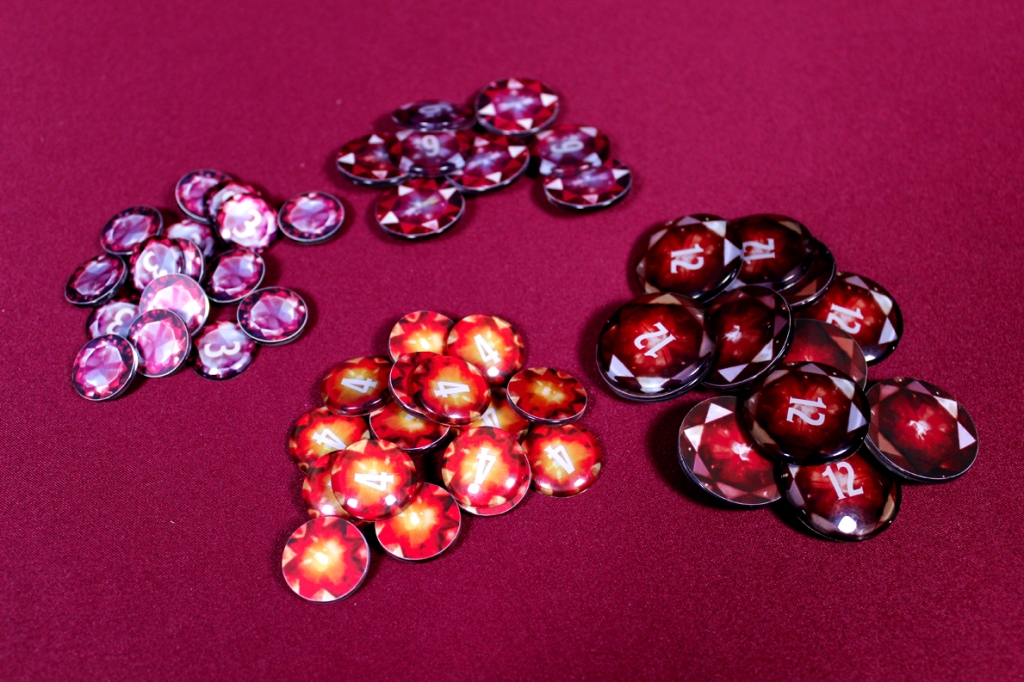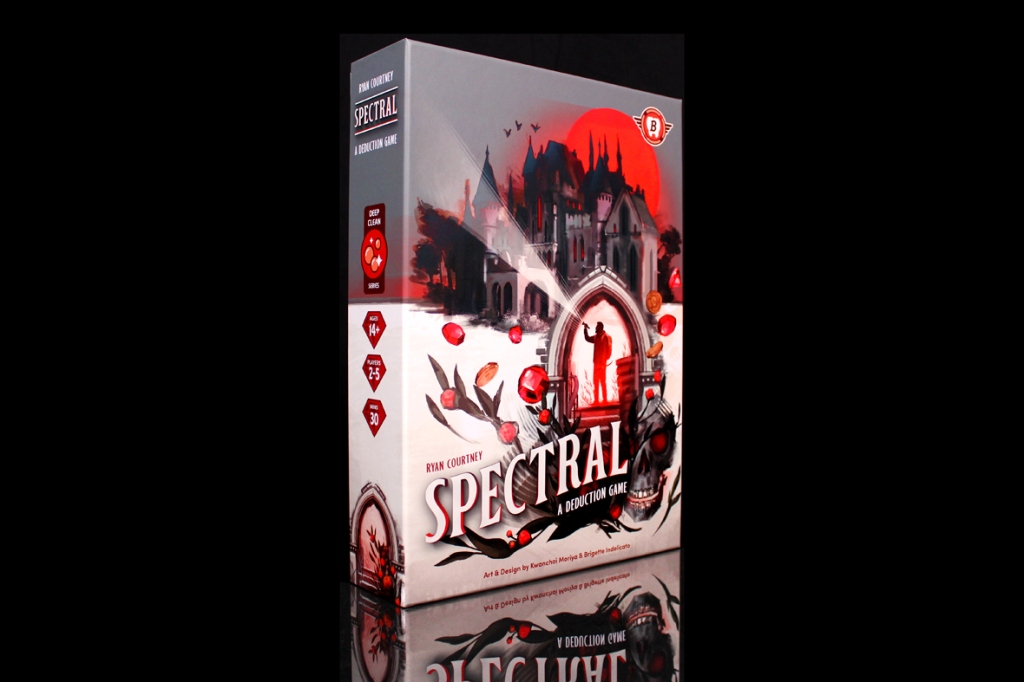
Base price: $45.
2 – 5 players.
Play time: ~30 minutes.
BGG Link
Buy on Amazon (via What’s Eric Playing?)
Logged plays: 3
Full disclosure: A review copy of Spectral was provided by Bitewing Games. Note that some components come from the Deluxe Edition; not all pictured components are included in the standard game.
Ugh, I goofed and managed to get sick, which means that the reviews for this week are going to be an absolutely Herculean effort to get through while I recover in bed. You know how it goes. I could ostensibly take a break of some kind, but I honestly need a way to pass the time, and this is about as good as any before I start digging into my video game backlog. I think I need to start Dragon Quest Monsters: The Dark Prince? It’s on my list. I’m ahead on Hades 2, but Lorelei and the Laser Eyes has been compelling, so we’ll see what piques my interest. In the meantime, let’s dig in and explore Spectral, from Bitewing Games!
In Spectral, you play as one of several investigative teams sent into a spooky house for treasure. That said, you know what you’re about, and if you see any skulls, you’re out. You don’t get paid enough for this. Each room has its own unique magic; you can’t quite figure out what’s in the room just from surveying it, but the room will tell you what’s in a different room. Maybe that’ll help! Can you get out with the most treasure and your life?
Contents
Setup
Start out by giving each player a deduction notebook of their choice:

They should then grab the corresponding Treasure Hunter tokens in that color:

Give them a pencil as well. Then, prepare the house! Each card has a row on it, A / B / C / D. Get all four cards in each row and shuffle them within that row.
Then, place each of the four sets of four cards into the randomizer sleeves, and shuffle those. Now nobody knows which row is which, hopefully. Make a 4×4 grid such that each row of cards is one row in the grid. There are little triangle tokens to allow you to indicate where the “horizon” is (that separates your grid into top and bottom halves, not left and right halves; this will matter later). You can set aside the gems and curse tokens for now:
If you’re playing with fewer than four players, you’ll also add some Rubble Tokens to the board.

At three, you place one in the space between each of the four middle cards. At two, you also place one between each of the outer middle cards, effectively dividing the board into quadrants. Once you do that, you should be ready to start!
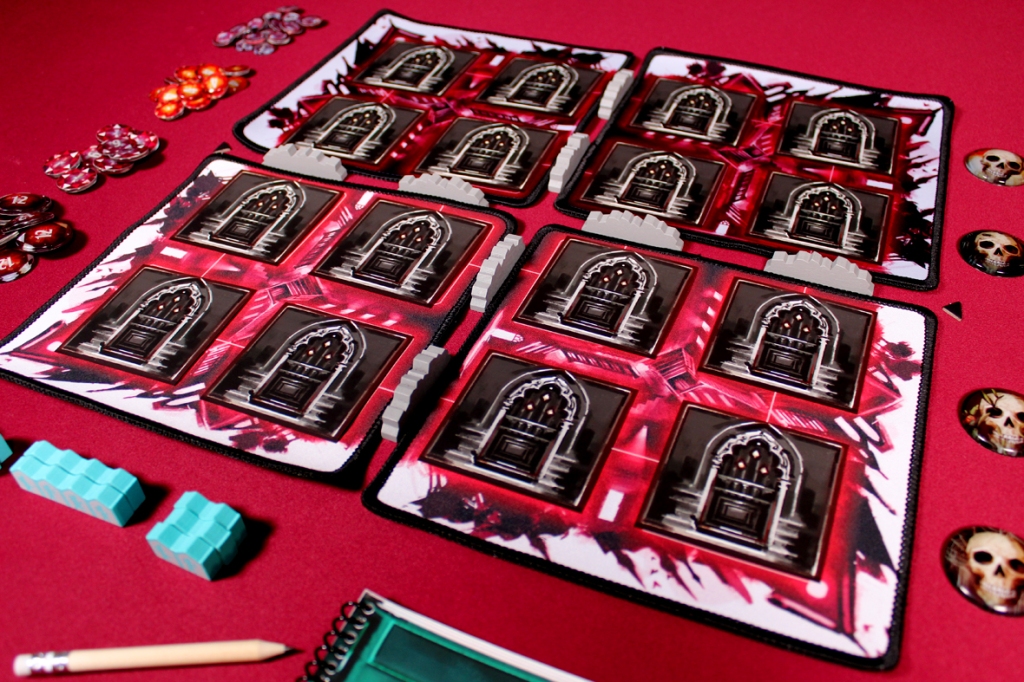
Gameplay
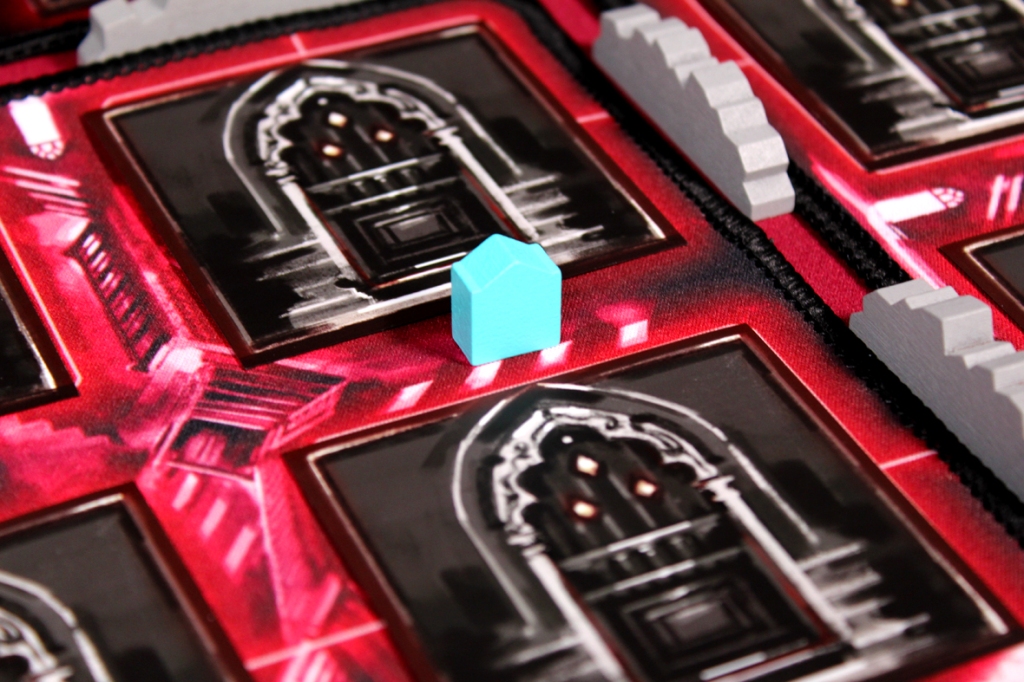
Spectral is a deduction game! On your turn, you’ll search a room to learn more about the house while you try to gain gems and avoid curses! At the end of the game, the player with the most points wins!
On your turn, you can either Pass, in which you do nothing, or place a Treasure Hunter token. Your Treasure Hunters come in sizes 1 / 2 / 4. If you want to place one on an empty space, you can place it in a “hallway” between any pair of rooms. If the space you want to place on is occupied by rubble or another player, you must place a Treasure Hunter at least twice the size of their token (rubble counts as 1). The token that gets bumped is returned to the player’s supply to be used again.

Once you place on a Hallway, you may inspect one of the rooms on either side of your Treasure Hunter token. Looking at them, they’ll tell you where a gem or a curse is located. Unfortunately, they don’t give information about your current room; they tell you about a different room in the house. Here’s your options:
- Two away, clockwise: This indicates that the item is two spaces away clockwise, treating the outer “ring” of 12 rooms and the inner “ring” of 4 rooms as separate rings.
- Diagonally across the quadrant: This indicates that the item is one space away diagonally, but it is in the same quadrant as this card.
- Reflected across the center: This indicates that the item is in the corresponding spot on the opposite side of the horizontal center line.
- Two away, diagonally: For each card, there is exactly one card that can be reached by moving two spaces away diagonally. This indicates that the item is on that space.
Note that spaces can contain no items, one item, or multiple items, such as two curses or a gem and a curse. Either way, update your deduction notebook and then it’s the next player’s turn.
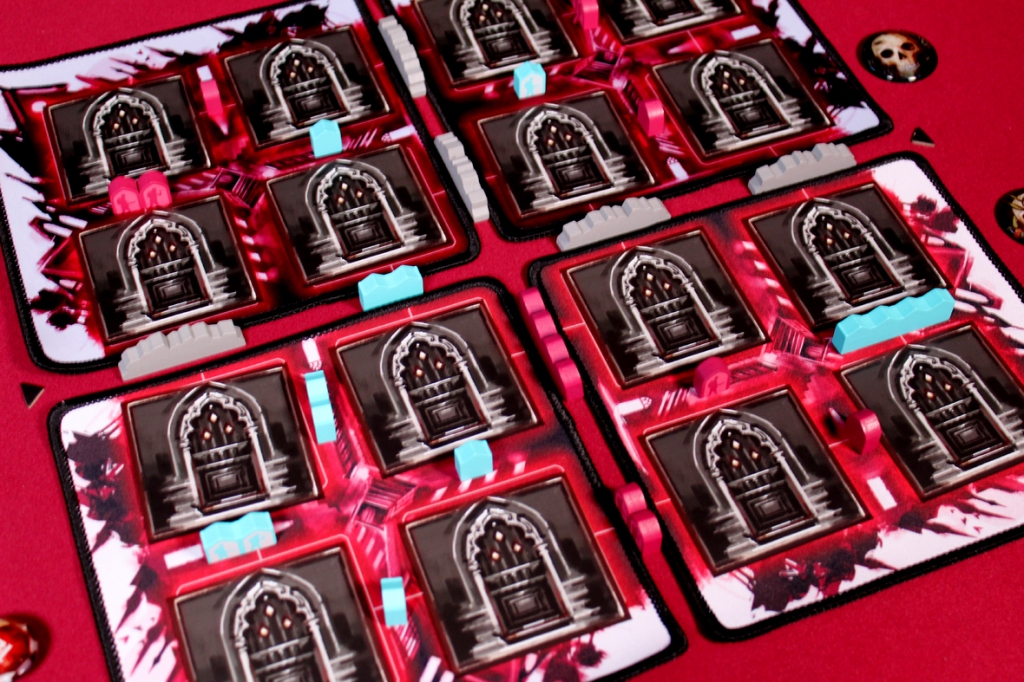
Play continues until one player has placed all their Treasure Hunters (at which point everyone gets a final turn) or until every player has passed (at which point the game immediately ends). Reveal each card and place a gem or curse token on the spot indicated (it’s best to do this in an orderly fashion so you don’t forget). Before scoring, any Treasure Hunters adjacent to a room with a curse are scared away and returned to the box!
For scoring, all gems are split by the number of tokens on adjacent spaces, regardless of the number of Treasure Hunters on the token. If you have one 1-token and it’s the only one adjacent to a gem, you get all 12. If you have a 1- and a 4-token and your opponent has a 2-token, you get 8 points and they get 4 (12 points, split into three parts, and then given to players based on token ownership). Additionally, you score 4 / 3 / 2 / 1 points per remaining Treasure Hunter on your unspent tokens at 2 / 3 / 4 / 5 players. The player with the most points wins!
For more adventure, try the Advanced Mode! That’ll add all new ways to swap and sneak around gems.
Player Count Differences
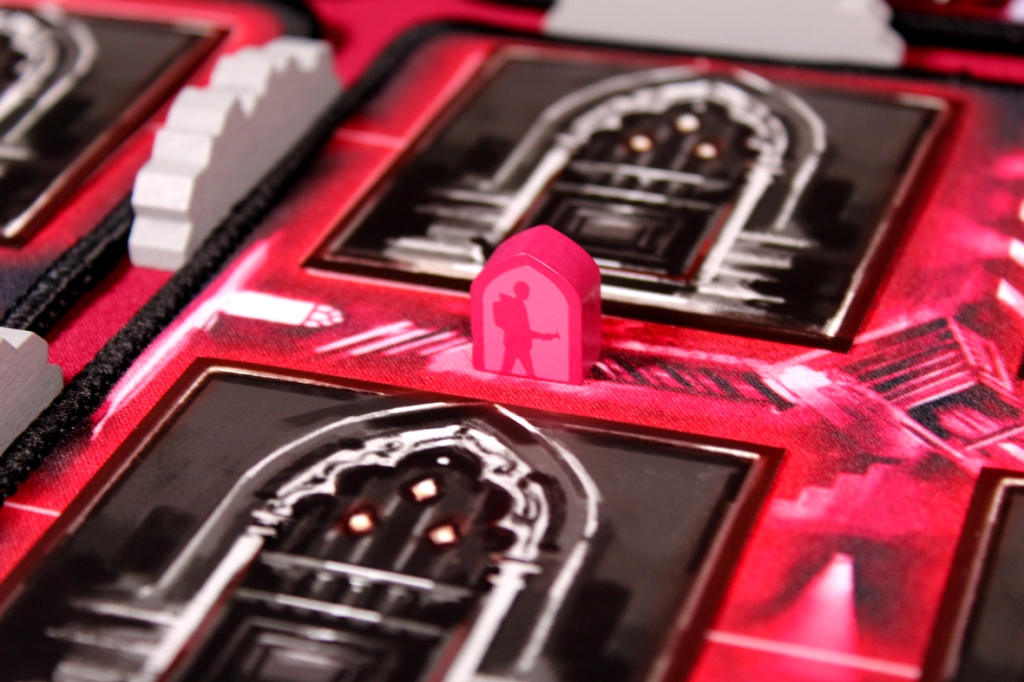
There aren’t a ton of differences based on player count; the biggest one you’ll see is just that there are more people everywhere on the board, so you’ll end up probably both having a bit less information (at least, information gleaned from cards) and having to bump opponents much sooner in the game to get to spots that you want. They control for this a bit at lower player counts with the Rubble Tokens, which are places to block certain hallways with fewer players, so either way, you’re either bumping rubble or you’re bumping an opponent. There’s probably some marginal slowdown per additional player just because people like to sit and deduce, but honestly, as soon as a player picks a spot and looks at it, the next player can effectively take their turn while they sit and ponder. It’s not quite simultaneous play, but Spectral keeps it snappy. As a result, no major player count preference! I have a soft spot for it at two, but that’s because I like almost every game with two players.
Strategy

- You should indicate which tiles you’ve looked at in your notebook. If you make a mistake with your deduction, that will help you make the case for being able to look at those cards again. I personally let players in games look at cards they remember previously looking at, but that’s largely because none of the players in my various groups have any cheat vibes. If your friends do, consider better players? I’m not sure what to tell you. But if you can make the case that you looked at the card before and forgot what was on it or mixed up some of the spatial aspects of the game, I’m sure the other players would help you out.
- I find it’s also helpful to place my Treasure Hunters so that they’re facing the card I want to look at. That’s just a good memory trick. Again, it lets me also make the case to double-check if I mess up my notebook.
- Some cards are not going to be searchable, just based on where Curses are. You generally have to just process of elimination out those cards, since they aren’t a good idea for you to investigate.
- Keep in mind that once you know where three of the four cards in a row are, you know what the fourth card must be. Use that to your advantage. That’s a pretty simple deduction strategy, but it works well, here. You can also use that to figure out which row is which pretty quickly as you move around.
- Even without knowing precisely, you might be able to deduce roughly what spots are “good” and “bad” based on what cards are remaining. If two spots have equal odds of being cursed and no chance of having a gem, why place on either? Just avoid those spots entirely. Let someone else get worse than nothing.
- Watch what your opponent is doing. Are they choosing spaces to avoid? You can use this to try and reason out what certain cards may be based on how they play, but I’d caution you: your opponent might catch on to this and start using reverse psychology and so on. Just be careful.
- You don’t need to use all of your Treasure Hunter Tokens; they’re worth points at the end of the game. They’re worth progressively less at higher player counts, but not nothing. At low player counts, placing your 4-token is a 16 point play. Sometimes you have to do the hard math and determine whether or not that’s worth it.
- You can try to bait your opponent into a bad spot, but be careful with that. I wouldn’t recommend this, but hey, to each their own.
Pros, Mehs, and Cons
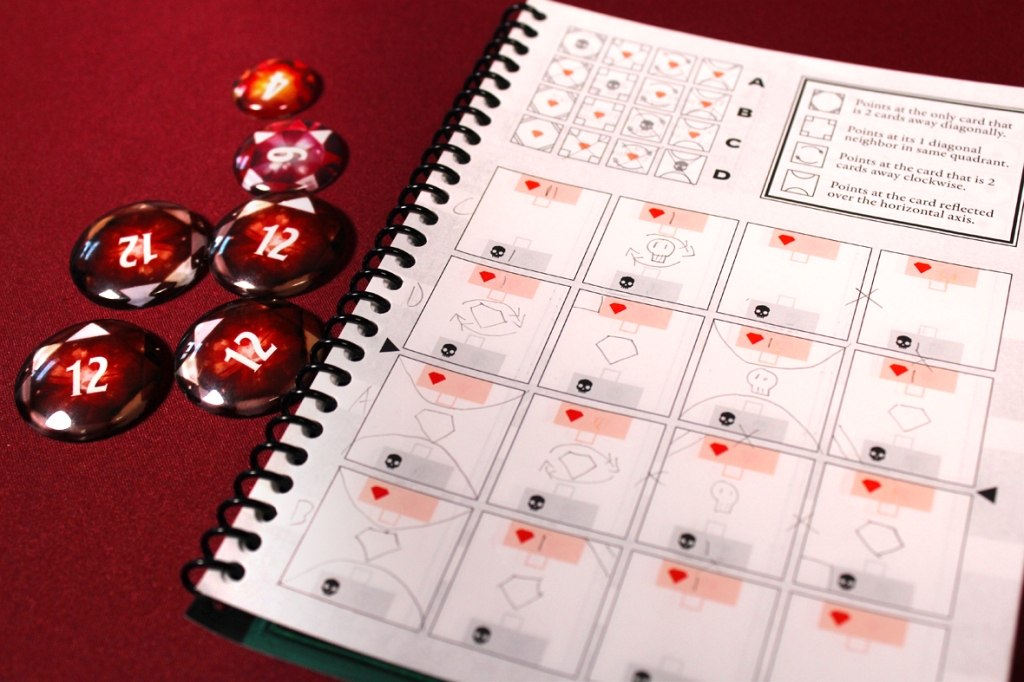
Pros
- Who doesn’t love a spooky house game? It’s one of my ongoing favorite themes, from some of the first games I played. Anything can happen in a big spooky house.
- The deduction here is pretty satisfying, especially as you start to figure out not just what you know, but what you can reason based on what you’ve seen so far. I really like the implied deduction where you can’t be sure what a tile is, but based on what it can’t be, it’s not really worth finding out any more information. It’s satisfying. It’s also satisfying to see your opponent place on a spot that you know is cursed, but that’s a different feature of the game.
- Plays pretty quickly. You can get a 30 minute game once everyone knows what they’re doing if you team-work setting up the game.
- I appreciate that everything is 12-based, so that scores are easy to break up. You see a lot of 12s and 24s in board gaming, and that’s just smart designers making thing divisible by two, three, and four to save you a long-form headache.
- There’s a bit of baiting you can do to other players to try and convince them to kick you off your space, like one of my faves, Cursed Court. It’s hard to do, but if you can successfully convince someone that the cursed space you’re on is actually good, it’s fantastic. Cursed Court uses a similar mechanic (even down to the doubling), and I like it in both.
- I like that all of the pads have team names on them, too. It’s a fun and goofy way to build player investment in the game itself. There will always be a bit of fighting over who gets what, but that’s okay.
Mehs
- The game can be substantially more challenge for players who aren’t sitting at the bottom of the play area, just because they have to rotate the play area to match their notebook. As with many hidden information spatial games, players without a good sense of internal spatial reasoning might have some trouble. Be patient and let them look at things they’ve seen again.
Cons
- Your initial placements can be a bit of an issue before you have any information. There’s some randomness to this, but placing an early Treasure Hunter on a cursed spot and just chalking that up to a loss feels kind of bad, especially because those point swings can matter. There’s not even necessarily a way to solve that, which is unfortunate.
- The visual language that the cards use takes some getting used to. Since the cards both represent rooms potentially with objects and instructions for where to look for the pictured object, there’s a risk of conflating the two and having players think that the room they’re looking at has the pictured item. It can often help to play Beginner Mode where you reveal the middle four cards and remove one of each type of each player’s Treasure Hunter tokens to get them used to the flow of the game,
Overall: 8.25 / 10
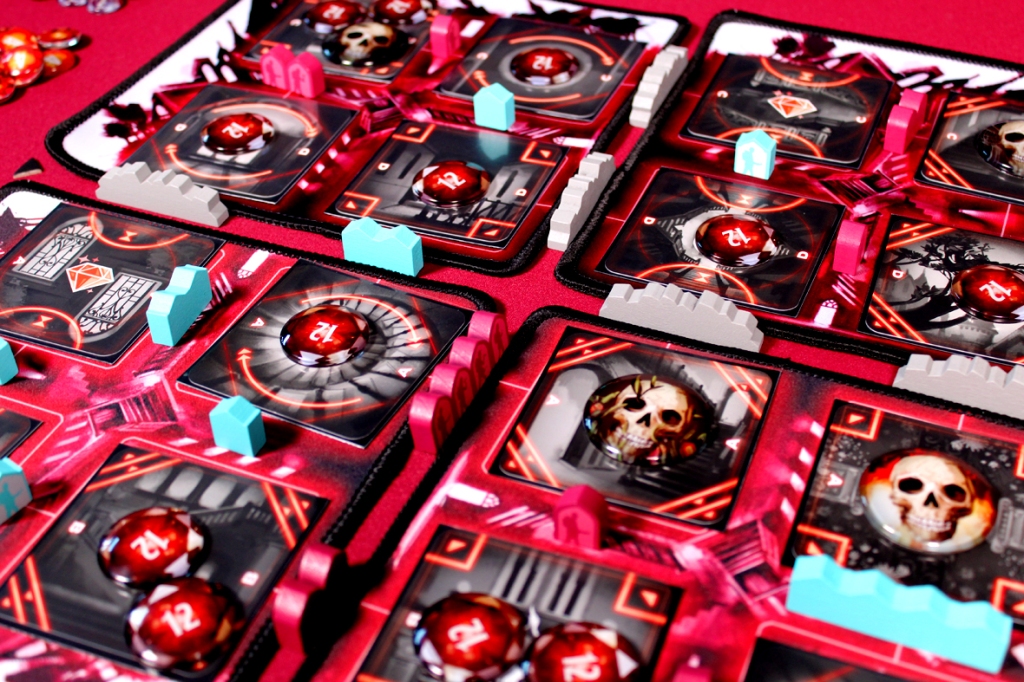
Overall, I think Spectral is a lot of fun! Granted, I’m still a bit annoyed by the randomness of the initial placement, but I don’t think there’s really much you can do about that, short of doing things that would mess with the random placement of cards and such. You can’t have guaranteed “safe” zones. So you’ve just gotta go for it, I suppose, and see what you get. That said, the deduction aspects of the game are surprising and entertaining. I really like that no card tells you what’s on it, so you have to balance information-gathering and scoring points if you want to win. At what point do you switch from one to the other? Can you successfully block off a super high-scoring space so that only you get it, or will you end up getting hit with a late-game curse? I think some part of me would enjoy a way to move your own pieces, but I do think that would extend the playtime commensurately, so who knows. The one thing really worth noting is that this is a game that players can commonly struggle with, as it combines hidden information, deduction, and spatial reasoning, so be patient with new players so they can ramp up on unfamiliar mechanics if necessary. If you’re interested in digging through a spooky house, you love deduction, or you’re just a fan of cool skulls, you’ll likely enjoy Spectral! I certainly have.
If you enjoyed this review and would like to support What’s Eric Playing? in the future, please check out my Patreon. Thanks for reading!
